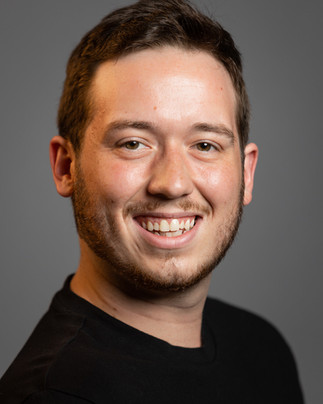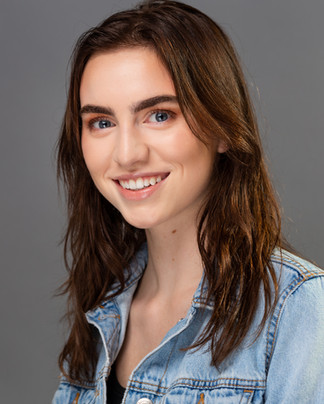Your acting headshot is your calling card, and the first thing a casting director sees when reviewing your application. Here's 6 tips to creating a strong acting headshot that will help you land bookings and auditions:
6. Research your Type and Role
The world of acting is one of the few places where "stereotyping" is an acceptable practice. It's a place where actors often chosen by their appearance or personality to be cast for a certain character "type". This can be based on things like their physical appearance, personality, or acting style. For example, an actor might be typecast as the "tough guy" in a show because they have a muscular build and a sleeve tattoo. However, this same actor would be a poor choice to be cast for a "high school nerd" role since their appearance simply does not match what an audience would expect for that type of character.

Before getting acting headshots done, it's best to have an idea of what type suits you best. To do this, you can watch a lot of movies and TV shows and pay attention to the types of characters that are similar to you. Once you've identified your type, build an outfit (or several) that fit your character type and bring that to your acting headshot session. Looking the part will help you stand out amongst the competition for roles you're auditioning for; but make sure you audition for roles that suit your type!
5. Showcase your Emotional Range
Casting directors flip through sometimes hundreds of faces when casting a role, only spending a brief moment looking at each one before moving onto the next, so it's important to give your headshot a bit of intrigue to make them stop and look at your face. To do this, add some exaggerated expressions and try to cover a range of emotions. Happy, quirky, angry, curious; you should try to incorporate these feelings into your expression to create an unforgettable headshot. Oh, and don't forget to smile for your headshot, too. Speaking of which...
4. Use your Eyes to Create Expression and Mood
Your eyes are the window to your soul, and they are the most important aspect of a headshot. Eye contact helps establish a connection with the viewer, and if done right, will create a powerful headshot with staying power. I always educate my clients to be "eye-thentic", meaning that they should be mindful of the emotion their eyes are conveying into the camera.. To do this, look into the camera and imagine a real person that you know looking back at you. Depending on the mood you are trying to create, it can either be a person you really care for, or someone you dislike. We're used to looking into people's eyes, and we often can tell when someone is bored, uncomfortable, or stressed. So remember to be eye-thentic and be aware of what your eyes are saying to the camera.
3. Use Natural Makeup
As far as makeup is concerned, less is more when it comes to your headshot. Stick to natural, minimal makeup that enhances your features without overwhelming them. Avoid heavy contouring or bold, dark colors, as these can look unnatural in a headshot. Instead, opt for subtle, neutral tones that complement your skin tone and features. Casting directors want to see what you really look like, so don't make any attempt to complicate it with any strong makeup choices.
2. Prepare Accordingly for the Photoshoot
If you don't think you need to prepare for a headshot session, I got news for you: you absolutely need to prepare for a headshot session. This means getting a good night's sleep, eating well, and avoiding alcohol or heavy meals on the day of the shoot. Try on your outfits a few days before and make sure they are fit and comfortable. And make sure you iron out any creases or wrinkles in the outfit before arriving to the studio. I'd also recommend any hygiene essentials like a comb, hair gel, and dental floss.

1. Bringing a Proper Wardrobe to Match Your Characters and Types
Your wardrobe is an important part of your headshot, as it can help to convey your type and the type of roles you're best suited for. When choosing your wardrobe for the photoshoot, think about the types of characters you typically play and what they would wear. For example, if you often play edgy, dramatic roles, you might want to wear a leather jacket or a bold, statement piece in your headshot. On the other hand, if you often play comedic roles, you might want to wear something more playful and fun.
Overall, the key to a great acting headshot is to show off your unique personality and abilities, and to tailor your headshot to the types of roles you're best suited for. By following these tips, you can create a headshot that will help you stand out and impress casting directors. If you're looking for more information on acting headshots, be sure to check out our Complete Guide to Acting Headshots.
Book your Acting Headshot Session
Ready to book your headshot session? My team and I specialize in creating natural and authentic headshots that showcase your unique personality and abilities. Contact us today to schedule your session and start building your acting career.

Austen Hunter Photography is a Headshot Photographer operating out of Pensacola, Florida. With his team, he delivers high-quality headshot images to working professionals, creative entrepreneurs, and corporate clients from Gulf Shores, Alabama to Destin, Florida. Austen Hunter is an internationally published photographer and is known for creating headshots that leave a Great First Impression. Book your headshots with Austen Hunter today.
















